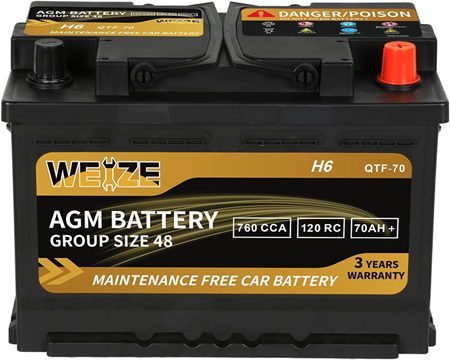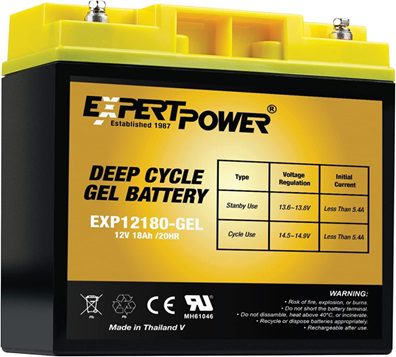Have you ever wondered about the key distinctions between AGM (Absorbent Glass Mat) and Gel batteries? Well, you’re in for a treat because we’re diving deep into the world of batteries to uncover the differences and help you figure out which one might be the best fit for your needs. Whether you’re powering up your car, RV, boat, or even a solar energy system, understanding the unique features of AGM and Gel batteries can make a significant impact on performance and longevity. So, grab a cup of coffee, settle in, and let’s unravel the mystery of AGM vs Gel batteries to find out which powerhouse is the ultimate champion!
Outline
ToggleWhat is an AGM Battery?

What Is A Gel Battery?

What is the Difference Between GEL and AGM Batteries?
AGM (Absorbent Glass Mat) and Gel batteries are both types of sealed lead-acid batteries, but they differ in their construction, electrolyte composition, and performance characteristics. Here are the key differences between GEL and AGM batteries:
1. Electrolyte Composition
- AGM: AGM batteries use a fiberglass mat separator that is saturated with liquid electrolyte (usually sulfuric acid). The electrolyte is absorbed in the glass mat, which allows for a more efficient and uniform distribution of ions during the electrochemical reactions.
- Gel: Gel batteries, on the other hand, use a silica-based gel as the electrolyte. The gel is a thick, jelly-like substance that immobilizes the electrolyte, preventing it from flowing freely. This feature makes Gel batteries spill-proof and allows for operation in different orientations.
2. Construction
- AGM: AGM batteries have a fiberglass mat sandwiched between the lead plates, providing a stable structure. This design allows for a higher surface area and efficient oxygen recombination, reducing water loss and making AGM batteries maintenance-free.
- Gel: Gel batteries use lead plates immersed in the gel electrolyte. The gel provides additional stability to the plates and ensures an even distribution of electrolyte. Gel batteries are also known for their resistance to vibration and shock, making them suitable for rougher conditions.
3. Performance Characteristics
- AGM: AGM batteries are known for their high energy density, quick recharge capabilities, and good performance in high-discharge situations. They are commonly used in applications like starting batteries for vehicles, deep cycle applications, and backup power systems.
- Gel: Gel batteries are valued for their deep-cycle capabilities, making them suitable for applications where a slow and steady release of energy is needed. They are commonly used in solar energy storage systems, UPS systems, and electric mobility applications.
4. Charging Characteristics
- AGM: AGM batteries generally have a faster charging capability compared to Gel batteries. They can accept a higher charging current, making them suitable for applications where rapid charging is essential.
- Gel: Gel batteries have a lower tolerance for high charging currents. They require a more controlled charging process to avoid overheating, making them better suited for slower and gentler charging cycles.
5. Temperature Sensitivity
- AGM: AGM batteries are less sensitive to temperature variations compared to Gel batteries, allowing for a broader range of operating temperatures.
- Gel: Gel batteries can be more sensitive to high temperatures, and excessive heat can affect their performance and lifespan.
Understanding these differences is crucial for choosing the right battery type based on specific application requirements and environmental conditions.
What Are The Similarities Between AGM And Gel Batteries?
While AGM (Absorbent Glass Mat) and Gel batteries differ in their construction and electrolyte composition, they share several similarities, particularly in their application areas and some operational aspects. Here are the key similarities between AGM and Gel batteries:
1. Sealed Construction
Both AGM and Gel batteries are sealed lead-acid batteries, meaning they are designed with a closed system that prevents the escape of electrolyte. This sealed construction enhances safety by eliminating the risk of acid spills and allows for installation in various orientations.
2. Maintenance-Free Operation
AGM and Gel batteries are both maintenance-free, as they do not require regular topping up of electrolyte levels. The sealed design eliminates the need for adding water or electrolyte throughout their service life.
3. Deep-Cycle Capabilities
Both battery types are suitable for deep-cycle applications, allowing them to withstand repeated cycles of discharging and recharging. This makes them ideal for use in renewable energy systems, electric vehicles, and other applications requiring sustained power over extended periods.
4. Versatility in Applications
AGM and Gel batteries find applications in a variety of fields, including automotive (as starting batteries), marine, solar energy storage, uninterruptible power supply (UPS) systems, and electric mobility. Their versatility makes them adaptable to different power storage needs.
5. Spill-Proof Design
The sealed design of both AGM and Gel batteries makes them spill-proof. This feature is particularly important in applications where the battery may experience vibrations or tilting.
6. Lead-Acid Chemistry
Both battery types are based on lead-acid chemistry, utilizing lead plates as the positive and negative electrodes. This commonality in the fundamental electrochemical principles makes them familiar and interchangeable in many applications traditionally using lead-acid batteries.
7. Safety Considerations
AGM and Gel batteries are considered safer than traditional flooded lead-acid batteries due to their sealed design, reducing the risk of acid exposure and environmental contamination. This makes them suitable for use in enclosed spaces.
While AGM and Gel batteries share these similarities, it’s essential to recognize their unique characteristics and differences when selecting a battery for a specific application. Factors such as charging requirements, temperature sensitivity, and discharge rates can influence the choice between AGM and Gel batteries based on the user’s needs and the operational environment.
AGM Or Gel Battery – Which One in the Best?
- AGM batteries offer high energy density, quick recharge, and are cost-effective, making them suitable for diverse applications.
- Gel batteries excel in deep-cycle use, with a focus on steady power delivery and resilience to vibration, but may have slower charging and be more temperature-sensitive.
- AGM is preferable for high-cranking applications, while Gel is ideal for scenarios requiring sustained, slow discharge cycles.
- AGM is less sensitive to temperature variations and generally more affordable.
- The choice depends on specific application needs, with AGM being versatile and cost-effective, while Gel is specialized for deep-cycle performance.
AGM vs Gel Battery -FAQs
Ans: The lifespan of a gel battery typically ranges from 4 to 8 years, depending on factors such as usage patterns, charging practices, and environmental conditions. Proper maintenance and adherence to recommended charging cycles can contribute to maximizing the battery’s longevity.
Ans: Yes, you can charge a gel battery with an AGM (Absorbent Glass Mat) charger. AGM and gel batteries share similar charging characteristics, and most modern AGM chargers are designed to be compatible with gel batteries. However, it’s essential to ensure that the charger has a gel charging mode or is labeled as suitable for gel batteries to optimize the charging process.
Conclusion
In the electrifying world of AGM vs Gel batteries, we’ve journeyed through the intricate details of these power-packed energy storage solutions. AGM batteries, with their liquid electrolyte-soaked glass mat separators, dazzle with versatility, quick recharge, and a pocket-friendly price tag. On the other hand, Gel batteries, rocking the gelified electrolyte, bring the steady vibes, excelling in deep-cycle applications and boasting resilience to vibrations. So, which one takes the crown? Well, it all boils down to your power play. Need a speedy start? AGM’s got your back. Craving the long-haul, slow-and-steady power delivery? Gel’s in for the win. The best battery dance partner depends on your specific needs and the rhythm of your application. So, whether you’re revving up a vehicle, energizing a solar setup, or just curious about the battery scene, here’s to making the perfect power move for your unique beat! Cheers to choosing the battery that keeps your energy game strong!

